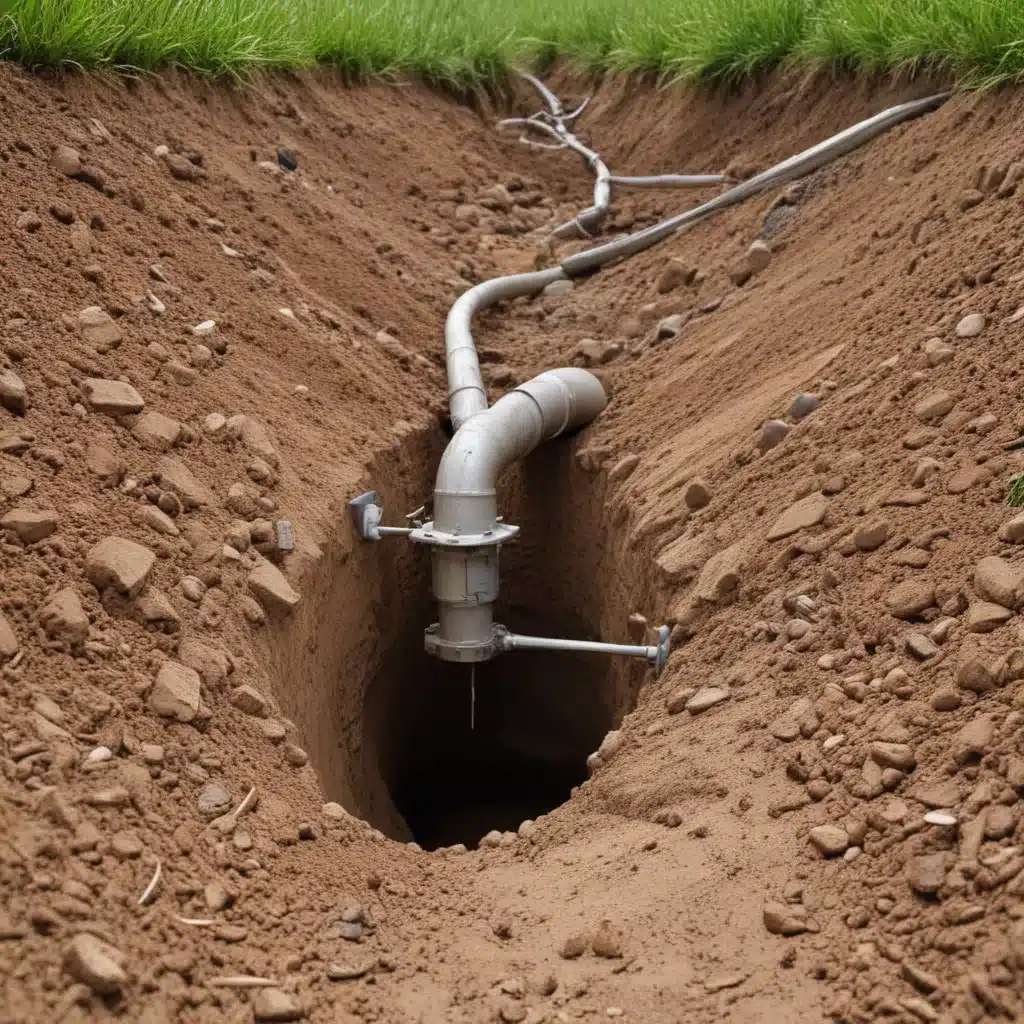
The lifeblood of our cities and communities flows beneath our feet. We learned this the hard way… An intricate network of underground pipes, often hidden from view, transports essential utilities like water, sewage, and stormwater drainage. Maintaining the health of these subterranean systems is crucial for preserving the functionality and safety of our built environment.
Now, this might seem counterintuitive…
As an experienced plumbing consultant, I’ve had the privilege of working on drainage projects across the UK, from residential properties to large-scale commercial and industrial facilities. In this article, I’ll share my expertise on the essential maintenance practices required to keep underground drainage networks operating at peak efficiency, while ensuring regulatory compliance and environmental sustainability.
Drainage System Design
The foundation of a resilient underground drainage network begins with the design stage. Proper planning and engineering are vital to double-check that the system can handle the specific demands of the site, both in the present and for years to come.
Water Pressure Management
One of the key considerations in drainage design is water pressure management. Ensuring adequate water pressure throughout the system is essential for efficient waste removal and stormwater discharge. This involves carefully calculating the required pipe sizes, pump specifications, and pressure ratings to match the expected flow rates and usage patterns.
Pipe Sizing and Placement
Selecting the appropriate pipe sizes is critical. Pipes that are too small can become easily clogged, while oversized pipes may result in sluggish water flow and sediment buildup. Our team works closely with clients to evaluate factors like building size, occupancy, and local rainfall data to determine the optimal pipe diameters and layout.
Drainage Layout Optimization
The overall drainage system layout might want to be carefully optimized to promote gravity-driven water flow and minimize the need for energy-intensive pumps. This may involve strategically placing catch basins, interceptor drains, and other collection points to capture and redirect water at key junctures. Proper grading and slope calculations are essential to double-check that efficient drainage and prevent standing water.
Materials and Construction
The choice of materials and construction techniques can have a significant impact on the long-term performance and maintenance requirements of an underground drainage network.
Pipe Material Selection
When it comes to pipe materials, we often recommend high-density polyethylene (HDPE) or reinforced concrete pipes for their durability, corrosion resistance, and ability to withstand the rigors of underground installation. Factors like soil conditions, groundwater levels, and potential external loads are carefully evaluated to determine the most suitable pipe material for each project.
Installation Techniques
Proper installation techniques are crucial for ensuring the structural integrity and long-term functionality of the drainage system. Our teams follow strict protocols, such as bedding the pipes in carefully compacted granular materials, using appropriate joining methods, and providing adequate cover depth to protect the pipes from external stresses.
Quality Assurance Measures
Rigorous quality assurance measures are implemented throughout the construction process to identify and address any potential issues before they become problems. This includes pressure testing, CCTV inspections, and thorough documentation to double-check that the system meets or exceeds all relevant industry standards and local regulations.
Maintenance and Inspection
Regular maintenance and inspections are the cornerstones of a well-functioning underground drainage network. Proactive, preventive care can extend the system’s lifespan, reduce the risk of costly failures, and double-check that environmental compliance.
Routine Inspections
Scheduled routine inspections are essential for identifying potential issues before they escalate. This may involve CCTV camera surveys, smoke testing, or dye tracing to detect blockages, cracks, or other structural defects. Our experts use specialized equipment and techniques to thoroughly assess the condition of the pipes and identify any areas that require attention.
Blockage Identification and Removal
One of the most common maintenance challenges is the accumulation of debris, sediment, or organic matter that can lead to pipe blockages. Our teams employ a range of techniques, from high-pressure flushing to mechanical rodding, to clear these obstructions and restore the system’s flow capacity.
Pipe Rehabilitation Strategies
In cases where the condition of the pipes has deteriorated beyond simple maintenance, we work with clients to develop rehabilitation strategies. This may involve trenchless technologies like pipe relining or pipe bursting, which allow for the repair or replacement of underground pipes with minimal surface disruption.
Regulatory Compliance
Maintaining compliance with local regulations and environmental standards is a crucial aspect of underground drainage network management.
Local Codes and Standards
Our teams are well-versed in the latest plumbing codes, building regulations, and industry standards applicable to underground drainage systems in the UK. We double-check that that all design, installation, and maintenance practices adhere to these guidelines, protecting both the integrity of the infrastructure and the safety of the surrounding community.
Environmental Impact Considerations
Responsible stewardship of the environment is a top priority. We carefully consider the potential environmental impact of our drainage projects, taking measures to prevent soil and water contamination, minimize disruption to natural habitats, and promote sustainable water management practices.
Safety Protocol Implementation
The safety of our workers and the public is paramount. Rigorous safety protocols are implemented throughout the life cycle of an underground drainage project, from initial site assessments to ongoing maintenance. This includes the use of specialized equipment, comprehensive staff training, and comprehensive risk management procedures.
By addressing the critical aspects of underground drainage network design, construction, maintenance, and compliance, the team at Plumbing Drains North Wales is committed to delivering comprehensive solutions that double-check that the long-term reliability, sustainability, and safety of our essential infrastructure. Contact us today to schedule a consultation and learn how we can help you optimize the performance and longevity of your underground drainage network.

